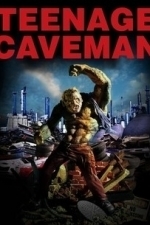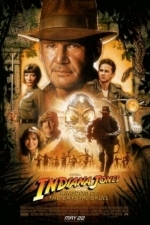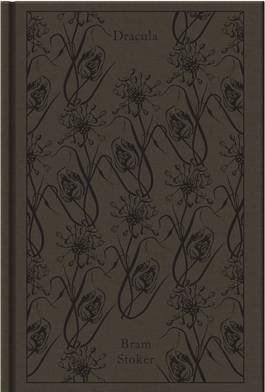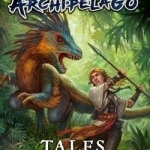
Frostgrave Ghost Archipelago - Tales of the Lost Isles
Book
The Ghost Archipelago has returned. A vast island chain, covered in the ruins of ancient and...
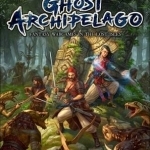
Frostgrave: Ghost Archipelago: Fantasy Wargames in the Lost Isles
Joseph A. McCullough, Dmitry Burmak and Kate Burmak
Book
The Ghost Archipelago has returned. A vast island chain, covered in the ruins of ancient and...

Faces of Praise!: Photos and Gospel Inspirations to Encourage and Uplift
Carol M. Mackey and B. Jeffrey Grant-Clark
Book
This full-color photo gift book that turns chart-topping contemporary gospel music into Bible-based...
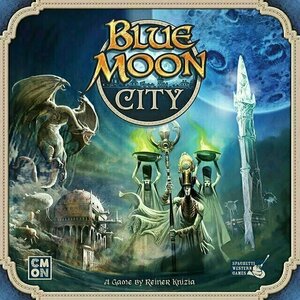
Blue Moon City
Tabletop Game
Blue Moon City - the board game - picks up where the two-player game, (Blue Moon), ended: the...
Gareth von Kallenbach (980 KP) rated Indiana Jones and the Kingdom of the Crystal Skull (2008) in Movies
Aug 14, 2019
In “Indiana Jones and the Kingdom of the Crystal Skull”, audience are re-introduced to Jones, who is by now an older, and wiser man who spent the years of WWII as a special operative which earned him not only the rank of Colonel, but numerous medals and citations.
The film opens with a group of bad guys forcing Indiana to locate an object from a gigantic storage area in the infamous Area 51. Since Jones was part of a team that examined said object nearly a decade earlier, his services are greatly desired, and he is forced to play along with his captors.
Of course Indiana Jones is still a man of action, and soon turns the tables on his captors in a daring and humor filled action sequence that quickly answers those that doubted Ford could pull off his charismatic character in his 60’s.
The events of the situation do not go unnoticed by the U.S. government who suspect Jones of collaborating with the enemy, and in the Red Scare America of the 1950’s Jones soon finds himself suspended from his teaching position and looking to head overseas.
As Indy’s train heads out of town, he is approached by a motorcycle riding messenger who says his name is Mutt (Shia LaBeouf), and he has been sent to find Indy by a former college of Indy’s Professor Oxle (John Hurt). Intrigued, Jones listens to the tale Mutt tells him that people have kidnapped Oxley and his mother, and he shows him a letter that Oxley instructed him to pass along to Indy should anything happen to him.
Before Indy can dig further into the mystery, he and Mutt are accosted by thugs and after a daring race through traffic on Mutt’s motorcycle, find themselves on a plane to South America in search of Oxley and Mutt’s mother as well as the fabled Crystal Skull that legend says will grant amazing powers to anyone who returns it to the fabled Golden City.
Thinking that his old friend Oxley may have succeeded where Indy was unable to many years earlier, Jones takes up the cause of locating the fabled artifact and the city as he believes that they are also the keys to locating his missing friend. The film really slows down here and devotes a good amount of time to advancing the story and characters and thanks to the amazingly detailed sets and enjoyable characters; you may find yourself not minding the change of pace.
Of course there are plenty of bad guys to add to the mix, including the evil Irinia Spalko (Cate Blanchett), who is leading a team of Russian soldiers who also have designs on the skull, as it would give them the power to read and control the minds of the leaders the world over, amongst other powers that would be used for their aggressive agendas.
What follows is an effects-laden adventure leading to a grand finale that is not as spectacular as past films in the series, but enjoyable nonetheless. When the action comes it is solid, and while some of it seems to be a retread of some of the classic moments of the series, it does deliver enough thrills to keep fans happy. There are some very welcome moments in the film such as a nice tribute to Sean Connery and the Late Denholm Elliot as well as a cleverly placed cameo early in the film during the warehouse fight.
Shia LaBeouf is an interesting addition to the series and his scenes with Ford are very enjoyable. They have a natural chemistry and do not seem forced like the Short Round character from “Indiana Jones and the Temple of Doom”. I was also very happy to see Karen Allen return to the series as Marion Ravenwood. She has truly proven to be the only love interest in the series that truly measures up to Indy, and her fiery temper with a girl next door charm is the perfect foil for Jones.
The effects in the film are not groundbreaking, but solid, however some may find that the films plot is a bit to complex and takes too long to setup. There were funny moments in the film to go along with the action and viewers who pay close attention will catch some very subtle nods to other moments in the series.
I was pleased with the sets in the film as Director Steven Speilberg and Producer George Lucas clearly paid attention to details in the look of the film. The tombs and exotic chambers depicted in the film had a very immersive nature to them much the same way that classic Disneyland rides like Pirates of the Caribbean and The Haunted Mansion place guests right in the middle of the spooky and exotic locales. From cobwebs, skeletons, and insects and well as treasures galore, it was like being in on the adventure with Indy.
The series does have some life in it and while the film does not measure up with the first film in the series, I would say it is on par with “Temple of Doom” and was for me, more enjoyable than “The Last Crusade.” The film leaves the door open for yet another adventure, and if comments from Speilberg and Lucas are to be taken seriously, we may see the beloved archeologist back on the big screen in the not too distant future.
The Bandersnatch (199 KP) rated Dracula in Books
Nov 7, 2019
Dracula was published in London in May 1897 by Archibald Constable & Company and was later copyrighted in the U.S in 1899 and published by Doubleday & McClure of New York. Despite having decent praise form reviewers it wasn't an immediate bestseller. Although the English newspaper the Daily Mail ranked Stoker's writing prowess in Dracula above that of Mary Shelly, Edgar Allen Poe and Emily Bronte's Wuthering heights. Unfortunately it didn't make Stoker that much money and he'd had to petition for a compassionate grant from the royal literary fund. When he died his widow was forced to sell his notes and outlines of the book at an auction in 1913. It was the unauthorised adaption of Nosferatu by F. W. Murnau in 1922 and the resulting legal battle made when Stokers widow took affront that the novels popularity began to grow.
Before writing Dracula Bram Stoker had been researching European folklore and stories of vampires having been most influenced by Emily Gerard's “Transylvania Superstitions” 1885 essay...which included content about the vampire myth. Some historians insist that Vlad iii Dracula (More commonly known as Vlad the impaler) was the model for Stokers count but there's been no supporting evidence to make that true. According to one expert Stoker only borrowed the barest minimum of information of the Wallachian tyrant and he's not even mentioned in Stokers notes. Stoker was a member of the London library during the 1890's where books by Sabine Baring-Gould, Thomas Browne, AF Crosse and Charles Boner are attributed to Stokers research. Stoker would later claim he'd had a nightmare caused by over-eating crab meat about a “Vampire king” rising from his grave. Whitby on the Yorkshire coast contributed its landscape since Bram Stoker often holidayed there during the summer.
Dracula wasn't Stokers first choice as title for the story since he cycled through The Dead Un-Dead then simply the Un-Dead the count wasn't even supposed to be Count Dracula having had the name Count Wampyr for several drafts before Stoker became intrigued by the name Dracula. After reading “An account of the principles of Wallachia and Moldavia with political observations relative to them” written by author William Wilkinson (Published in 1820). the descendants of Vlad ii of Wallachia took the name Dracula or Dracul after being invested in the Order of the Dragon in 1431. In the old Romanian language the word Dracul mean “the Dragon” and Dracula meant “Son of the Dragon”. Nowadays however Dracul means “the Devil”
Whilst Dracula is known as THE Vampire novel its not the first. Johan Wolfgang Von Goethe had his book the Bride of Corinth published in 1797, 1871's Carmilla (a story about a lesbian vampire) was written by Sheridan Le Frau and James Malcolm Rymer's penny dreadful series Venny the Vampire was a product from the mid Victorian period. Even John Polidori created an image of a vampyric aristocrat in his 1819 story The Vampyre when he spent a summer with Merry Shelly (creator of Frankenstein) and her poet husband Percy Bysshe Shelly and Lord Bryon in 1816.
I really love Dracula. It showed the madness, the ethereal quality and the ultimate danger of what a vampire could do. Like many other goth inclined teenagers trying to find their feet in the world Dracula definitely added its two cents to my self worth and love of all things macabre. The fact it was written by a Victorian writer has added a unusual depth to the story as only a Victorian writer could. The culture of the Vampire has become deep rooted and wide spread in its acceptance and Dracula has definitely spearheaded such a phenomenon.
Abraham “Bram” Stoker was Born in Dublin, Ireland on the 8th of November 1847, He was the third of seven children born to Abraham and Charlotte Stoker and was bedridden with an unknown illness until he recovered at seven. He started schooling at a private school run by the Reverend William Woods and grew up without serious illness. Stoker excelled at sports at Trinity College Dublin having graduated in 1870 with a BA (Bachelor of Arts). He was an Auditor of the College Historical Society and the president of the University Philosophical Society where his first paper was on Sensationalism in fiction and society.
Thanks to his friend Dr. Maunsell, Stoker became interested in the theatre as a student and whilst working for the Irish civil service he became a theatre critic for the Dublin evening mail where he attracted notice for the quality of his reviews. Stoker gave a favourable review of Henry Irving's adaption of Hamlet in December 1876, this prompted Irving to invite him to dinner where they ended up becoming friends. Stoker wrote The Crystal Cup which was published by the London society in 1872 and The chain of Destiny which was released in four parts in the Shamrock. Stoker also wrote the non-fiction book the duties of clerks of petty sessions in Ireland which was published in 1879.
Bram stoker married Florence Balcombe the daughter of a lieutenent-colonel in 1978 and they moved to London. Where Stoker ended up the Business manager of the Lyceum theatre as well as manager for Henry Irving- a position he held for 27 years. Despite being a very busy man Stoker ended up writing several novels (as well as Dracula) Including The Snakes pass in 1890, the lady of the shroud in 1909 and the lair of the white worm in 1911. when Henry Irving died in 1906 he published his personal reminiscences of Henry Irving. Stoker also managed productions at the Prince of Wales theatre.
Bram stoker died after a series of strokes in London on April 20th 1912, the cause of death is split between the possibility of Tertiary Syphilis or overwork. He was cremated and was placed in a display urn at Golders Green Crematorium in North London, he was later joined by the ashes of his Son Irving Noel Stoker in 1961, his wife Florence was meant to join them but her ashes were scattered at the Gardens of rest.
Stoker was honoured with a Google Doogle (the banner on goggles homepage) on November 8th 2012 commemorating the 165th anniversary of his birth. An annual festival in honour of Bram Stoker happens in Dublin, its supported by the Bram stoker estate and was/is usually funded by Dublin City Council and Failte Ireland.
My opinion of Bran stoker is that of a decent hard working man who loved life. Stoker epitomises the phrases of “a man on a mission” and “a man who hussles”. Having worked extremely hard both creatively as a novelist and business wise as a theatre manager Stoker pretty much showed that if you work hard you could pretty much do anything you set your mind to.
And there you have it a book for all the ages, definitely under the banner of AWESOME!!!.



